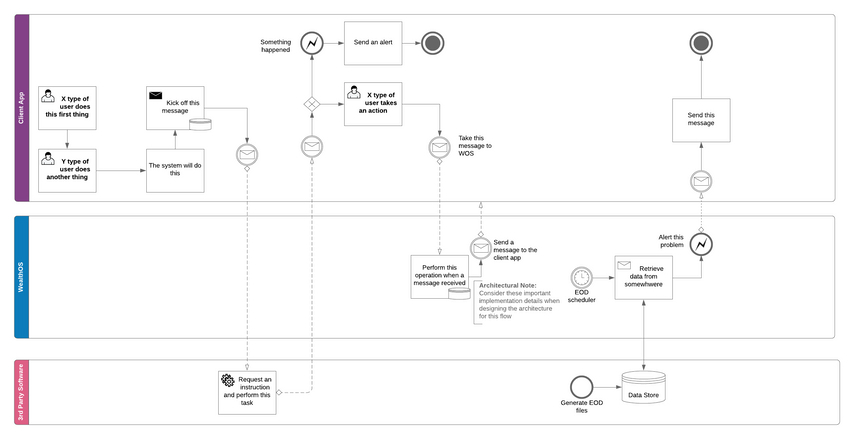By Anton Padmasiri
Last week I talked about the importance of an amazing team to get a startup off the ground. So as promised for the next installment, here's a sneak peek into how WealthOS goes about taking features from concept to code.
After having built our private beta we kicked off our seed fundraising. In parallel to that, we also started visualising what features we would build for V.1 of our production-ready platform. While the private beta was never meant for real-life usage, its underlying capabilities were highly reusable. However, a production-ready, cloud-native platform is a very different animal to a proof of concept.
The Planning
There's a simple mental model I apply to my product thinking when I'm building either a product or feature from scratch. First, go horizontal i.e. try to get a meaningfully end-to-end version out ASAP. So we picked a feature set that, when built, can run some version of a simple wealth use case end-to-end.
While WealthOS has many modular feature areas, all, if not most, of them, orbit around what we call the core. This core is made up of the following:
- Investor
- The accounts that belong to the investor (we call these pots)
- The securities and cash holdings that are held in these pots
- The transactions that caused those holdings to be
So we prioritised features that would exercise these core muscles. With a core wealth platform, it's critical to get your transactions and holdings module right, or you are guaranteed to be dragged down by any “original sins” you commit in this area for the rest of your roadmap.

As with most best laid plans, our perfectly prioritised roadmap was about to get ripped to pieces.
Agreeing terms with our first client only a month after closing the seed raise brought in yet another dynamic to the WealthOS 1.0 build. The product roadmap would collide with the programme roadmap. I have seen these collisions being catastrophic on too many occasions in more resource-rich organisations than ours due to internal misalignment. It was essential for us to quickly gain a deep understanding of our client use case to adjust for the inevitable impact on our roadmap.
When discussing what transaction information should be visible to an advisor with our client, we contributed ideas that significantly simplified their build effort. They were then able to use the data WealthOS provided through our API to develop this feature quickly. WealthOS is not just about the platform. We also bring relevant industry expertise that allows us to collaborate with our clients effectively.
After several deep dives with the client, we now have a clear(ish) way forward. Not only did we have our WealthOS 1.0 roadmap but a brand new digital wealth product that would most probably go live on our platform before the year was out. Heady stuff!
The Process
Generally, we build up a portfolio of key artefacts that evolve through our ideation process. It starts with a business context one-pager written by a subject matter expert. Then the lead product owner will create a detailed write-up of the feature along with a BPMN diagram.

The product team then acts as a council; we dedicate time to challenge each other until we all agree on the way forward. Tech design is a no-go until there is clear alignment on feature design from the business point of view. Once this is finalised, we would agree on the versions of the feature (I call these slices and here again is where the philosophy of “thinking horizontal” comes to the fore). These slices then get broken down into user stories and acceptance criteria, and we move on to tech design, build and test.
Each feature will be owned by a senior member of the product team. Though all of us get involved in getting the feature codable, it is ultimately the owner who is in charge of team management and delivery.
This process isn't written in stone for every single feature. Simple features will obviously be expedited. In contrast, more complex features will utilise the entire process and then some.
The Perfecting
Perfecting our features doesn't stop with the product team. Our engineering and QA teams come from enterprise FinTech pedigree and highly numerical academic backgrounds. As they design, build, and test, they raise more challenges that help us refine a given feature.At WealthOS a feature is not complete without the API implication fully developed and supporting API documentation written. All releases will have accompanying release notes. We are serious about building a low friction platform.
We are four releases in now, and the platform is truly taking shape. Product is only one part of the puzzle. Demo Monday is my favourite day -- nothing beats getting to see features in action. Organising engineering and QA teams to build, test and release features is difficult at best of times and during times of the Rona, it's even more of a challenge. So the last of these blogs will come from Chamat who'll talk about how we organise ourselves to achieve great quality and release cadence despite being distributed across different continents.
